
Carolyn Young is a business writer who focuses on entrepreneurial concepts and the business formation. She has over 25 years of experience in business roles, and has authored several entrepreneurship textbooks.
David has been writing and learning about business, finance and globalization for a quarter-century, starting with a small New York consulting firm in the 1990s.
Published on January 3, 2022

$84,000 - $336,000 p.a.
$67,200 - $134,400 p.a.
When launching your home staging business, keep these essential aspects in mind:
![]()
Interactive Checklist at your fingertips—begin your home staging business today!
You May Also Wonder:
Is a home staging business profitable?
Even working by yourself as a home stager, if you just stage five homes a month, you can see annual profit of over $50,000. Profit margins are high because you’ll have few ongoing expenses.
How can I get clients for my home staging business?
While you can do marketing to try to reach homeowners, your best bet is to reach out to realtors who can give you referrals. They need home stagers to help sell homes faster and for more money.
What is the difference between home staging and decorating?
Home staging and decorating differ in their purpose and focus. Home staging involves preparing a home for sale by strategically arranging furniture, decluttering, and enhancing the overall appeal to attract potential buyers. It aims to create a neutral and inviting environment. Home decorating, on the other hand, focuses on personalizing a space based on the homeowner’s preferences and style, incorporating their tastes into the design choices.
How can I promote a home staging business?
To promote a home staging business, it is essential to establish a strong online presence. Create a professional website that showcases your portfolio and services. Utilize social media platforms to share before-and-after photos, provide home staging tips, and engage with potential clients. Network with real estate professionals, attend industry events, and offer your expertise through presentations or workshops.
What additional services can I offer for my home staging business to increase revenue?
To increase revenue in your home staging business, consider offering additional services such as consultation services, where you provide expert advice on home staging techniques and design recommendations. You can also offer vacant staging services, where you provide furniture and accessories to transform empty properties.
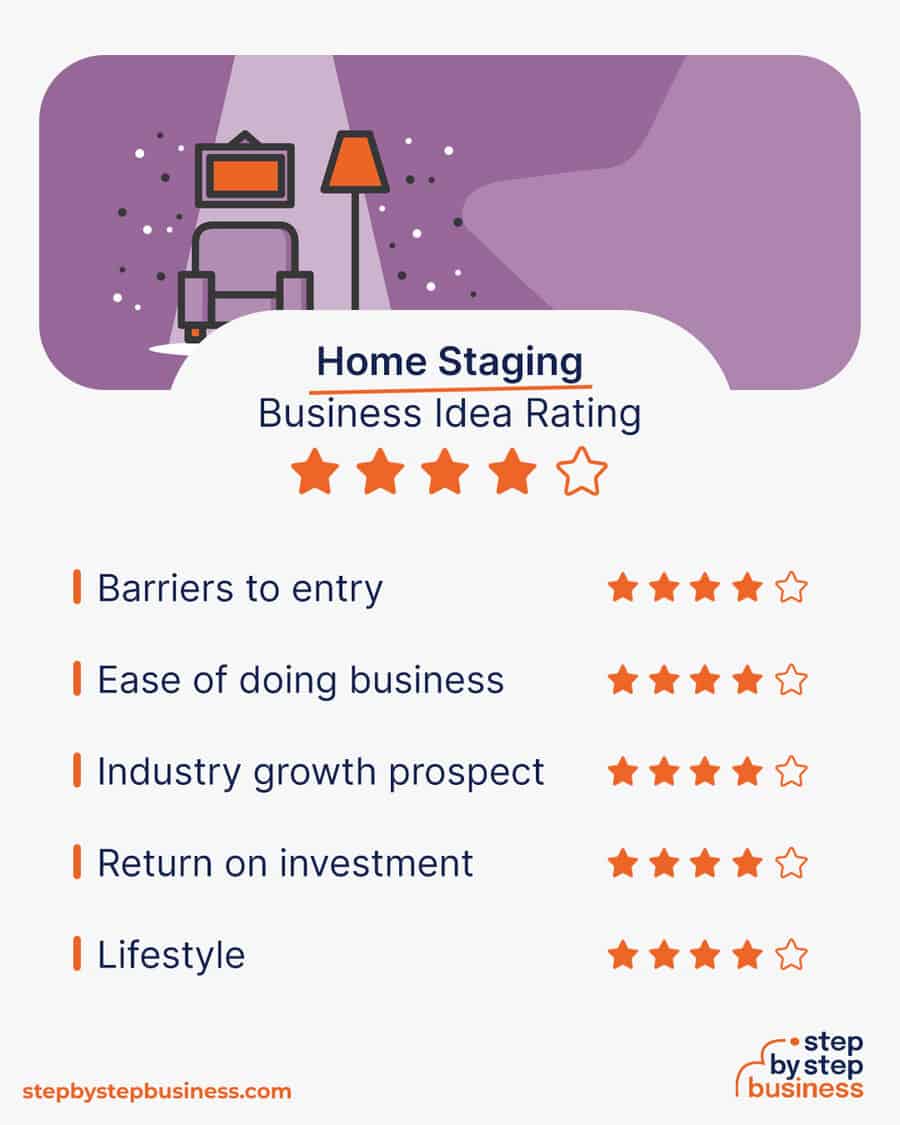
Starting a home staging business has pros and cons that you should consider before deciding if it’s right for you.
Staging is becoming more mainstream and is being done at all price points. While staging used to be done only if the home had an issue, such as a poor view, it’s now the norm, even in higher price ranges where you would expect the homes to already show well. The IAHSP study showed that 40% of homes in the $350,000 to $500,000 price range that sold in 2019 were staged, and in the $500,000 and up price range the number was over 20%.
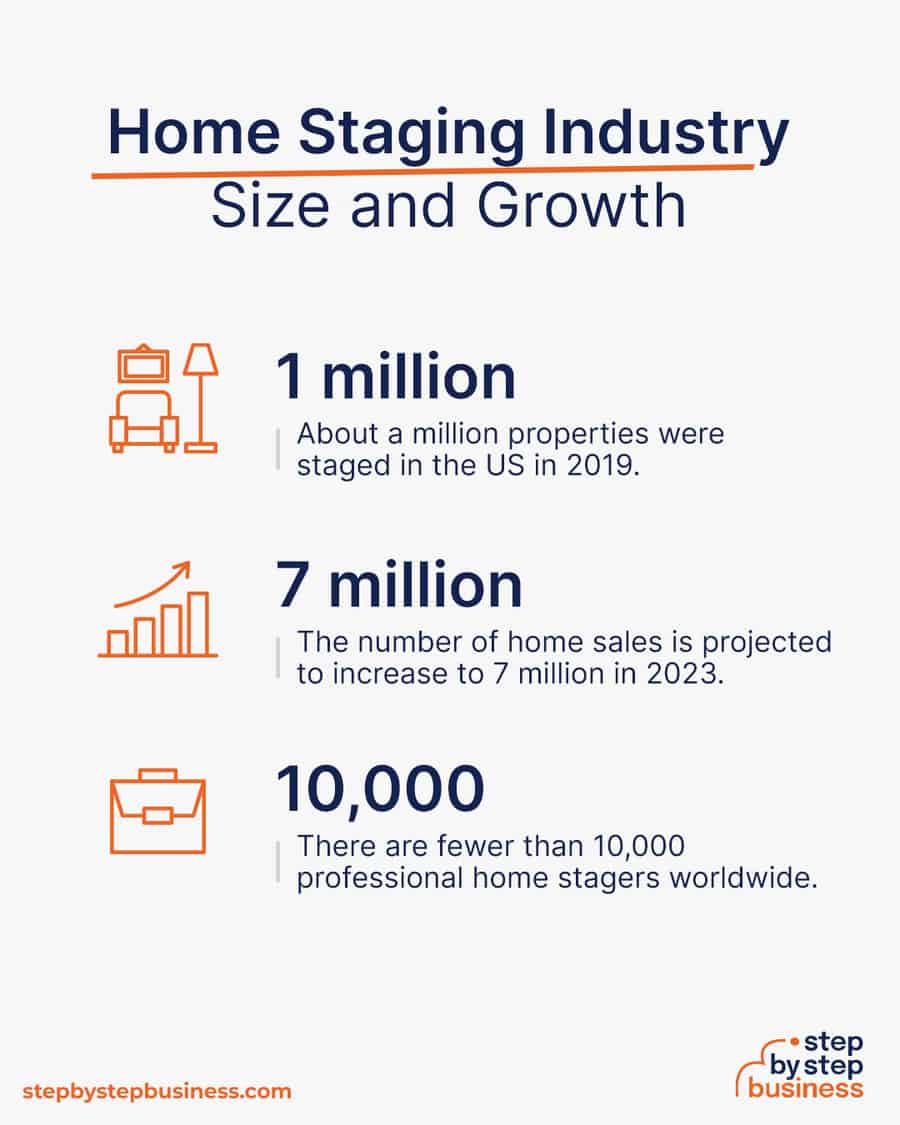
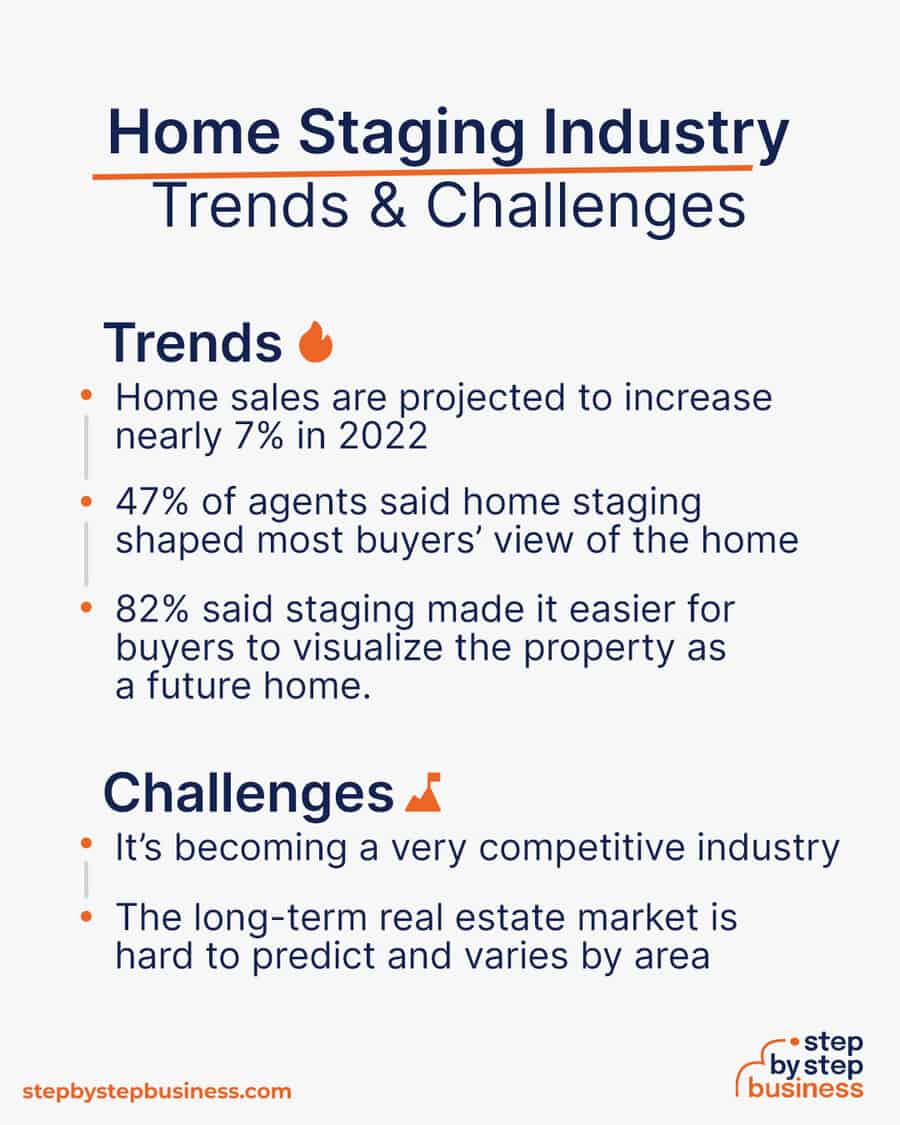
Industry trends include:
Challenges in the industry also exist that include:
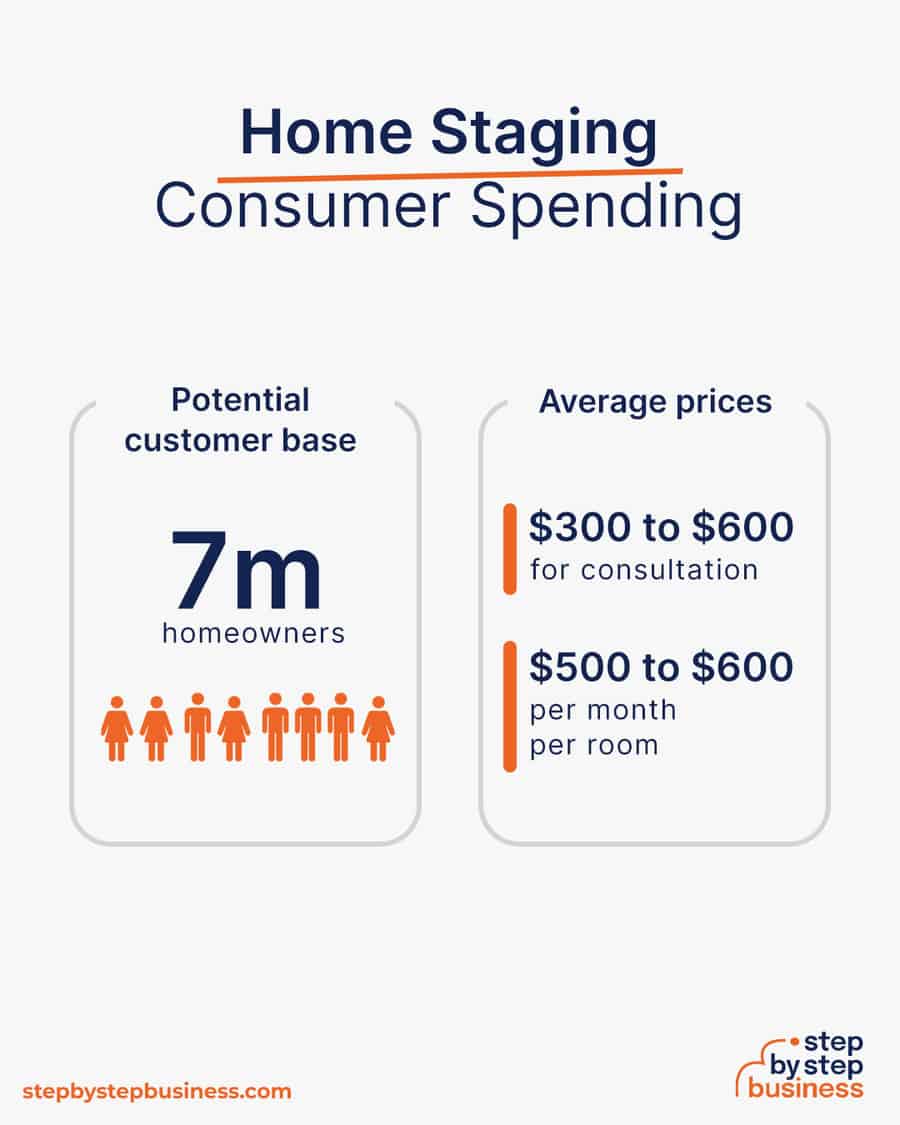
Startup costs for a home staging business range from about $3,500 to $14,000. Your main costs are the inventory of items that you’ll need for staging. You can start with some second-hand items and add more to your inventory later.
You’ll need a handful of items to successfully launch your home staging business. Here’s a list to get you started:
| Start-up Costs | Ballpark Range | Average |
|---|---|---|
| Setting up a business name and corportation | $150 - $200 | $175 |
| Licenses and permits | $100 - $300 | $200 |
| Insurance | $100 - $300 | $200 |
| Business cards and brochures | $200 - $300 | $250 |
| Website setup | $1,000 - $3,000 | $2,000 |
| Initial Inventory of Staging Items | $2,000 - $10,000 | $6,000 |
| Total | $3,550 - $14,100 | $8,825 |
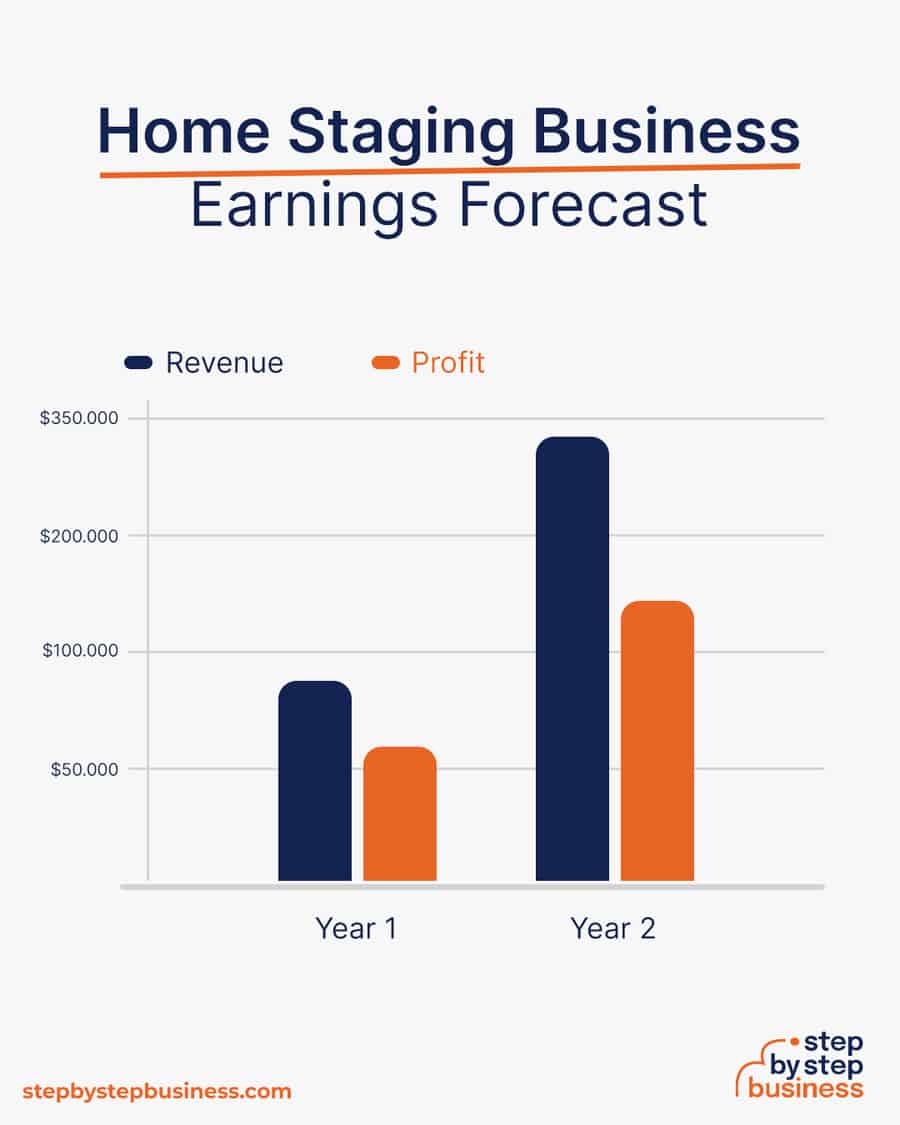
The average price to stage a home ranges from $300 to $600 for an initial design consultation, and $500 to $600 per month per room as long as the house is on the market. This is basically a fee for the staging itself and the rental of the staging items. Subtracting for item delivery and fuel costs, your profit margin should be about 80%.
In your first year or two, you could work from home and stage five homes per month, charging $400 for the initial consultation and $500 per month for an average of 2 months. This would bring you $84,000 in annual revenue and $67,200 in profit, assuming that 80% margin.
As your brand gains recognition, sales could climb to 20 houses per month. At this stage, you’d hire staff and rent a commercial space to store your inventory, reducing your margin to 40%. With annual revenue of $336,000, you’d still make a tidy profit of $134,400.
There are a few barriers to entry for a home staging business. Your biggest challenges will be:
If you’re still not sure whether this business idea is the right choice for you, here are some related business opportunities to help you on your path to entrepreneurial success.
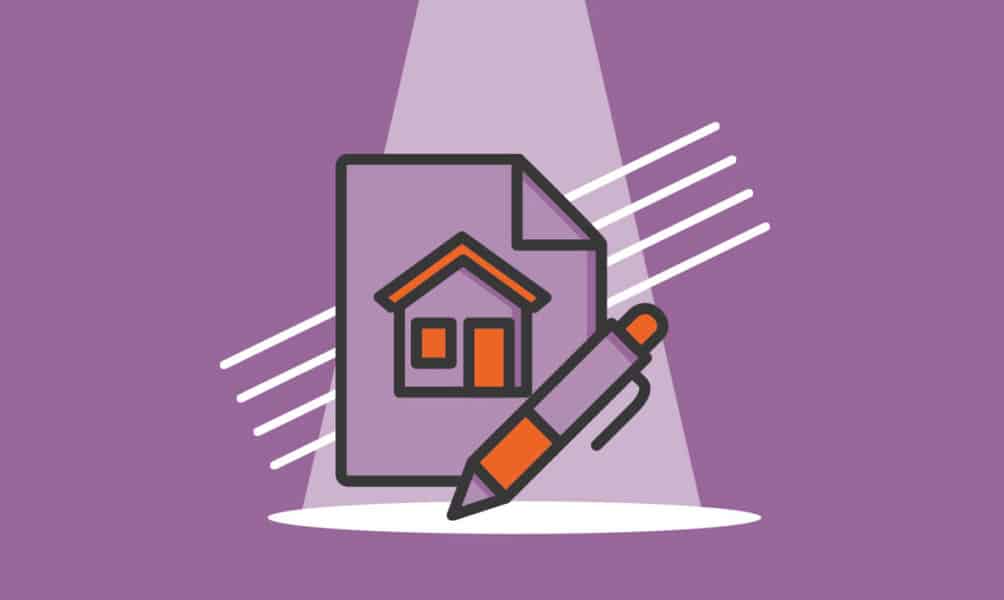
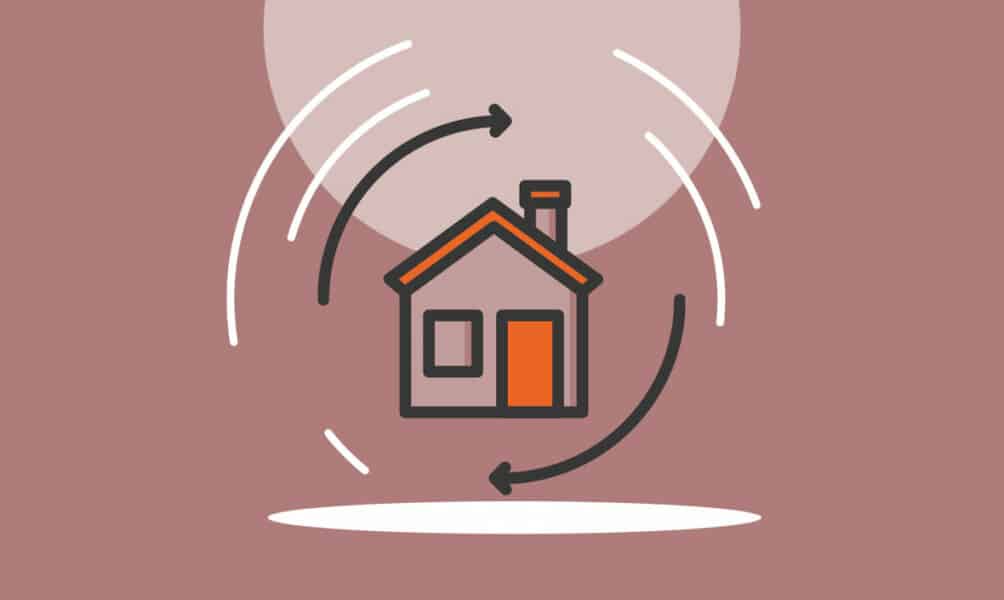
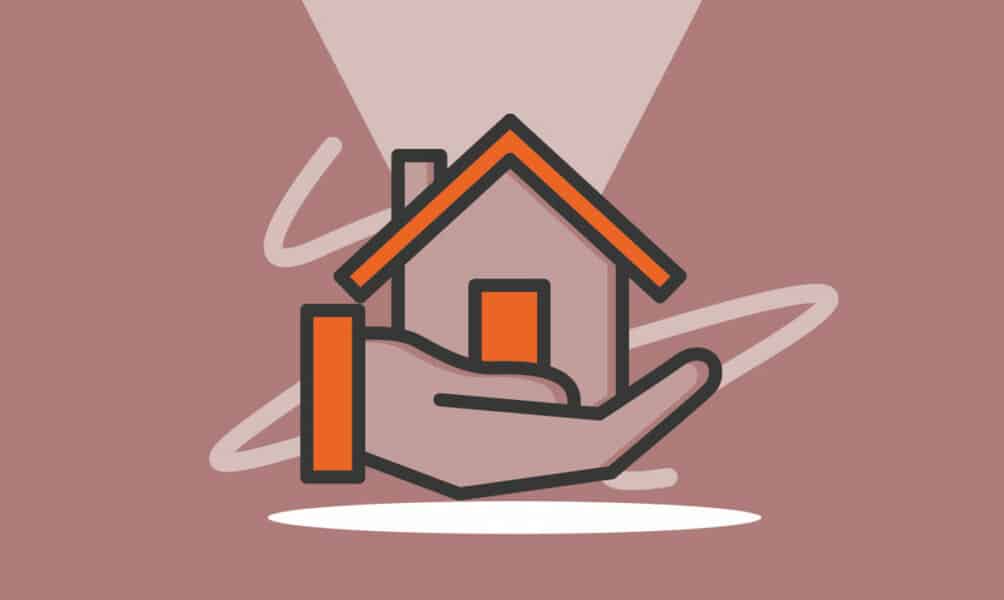
Now that you know what’s involved in starting a home staging business, it’s a good idea to hone your concept in preparation to enter a competitive market.
Market research will give you the upper hand, even if you’re already positive that you have a perfect product or service. Conducting market research is important, because it can help you understand your customers better, who your competitors are, and your business landscape.
Research home staging businesses in your area to examine their services, price points, and customer reviews. You’re looking for a market gap to fill. For instance, maybe the local market is missing a discount home staging company.
![]()
You might consider targeting a niche market by specializing in a certain aspect of your industry, such as luxury homes.
This could jumpstart your word-of-mouth marketing and attract clients right away.
Explore Alisa Arnhalt’s interview for exclusive insights into home staging and design excellence.
You could offer a variety of staging packages for customers. You could offer:
The price for an initial design consultation ranges from $300 to $600. Pricing thereafter is $500-$600 per month for as long as the house is on the market. When starting small, your only ongoing costs should be having items delivered and placed in the house, and fuel costs.
Once you know your costs, you can use this Step By Step profit margin calculator to determine your mark-up and final price point. Remember, the price you use at launch should be subject to change if warranted by the market.
Your target market will mainly be realtors who will give you referrals. You can find them on business-related sites like LinkedIn and on realty sites like Realtor.com.
In the early stages, you may want to run your business from home to keep costs low. But as your business grows, you’ll likely need to hire workers for various roles and may need to rent out an office with space for storing your staging items. Find commercial space to rent in your area on sites such as Craigslist, Crexi, and Instant Offices.
When choosing a commercial space, you may want to follow these rules of thumb:
Here are some ideas for brainstorming your business name:
Once you’ve got a list of potential names, visit the website of the US Patent and Trademark Office to make sure they are available for registration and check the availability of related domain names using our Domain Name Search tool. Using “.com” or “.org” sharply increases credibility, so it’s best to focus on these.
Powered by GoDaddy.com
Finally, make your choice among the names that pass this screening and go ahead with domain registration and social media account creation. Your business name is one of the key differentiators that sets your business apart. Once you pick your company name, and start with the branding, it is hard to change the business name. Therefore, it’s important to carefully consider your choice before you start a business entity.
Here are the key components of a business plan:

If you’ve never created a business plan yourself before, it can be an intimidating task. Consider hiring an experienced business plan writer to create a professional business plan for you.
Registering your business is an absolutely crucial step — it’s the prerequisite to paying taxes, raising capital, opening a bank account, and other guideposts on the road to getting a business up and running.
Plus, registration is exciting because it makes the entire process official. Once it’s complete, you’ll have your own business!
Your business location is important because it can affect taxes, legal requirements, and revenue. Most people will register their business in the state where they live, but if you are planning to expand, you might consider looking elsewhere, as some states could offer real advantages when it comes to home staging.
If you’re willing to move, you could really maximize your business! Keep in mind, it’s relatively easy to transfer your business to another state.
Business entities come in several varieties, each with its pros and cons. The legal structure you choose for your home staging will shape your taxes, personal liability, and business registration requirements, so choose wisely.
Here are the main options:

We recommend that new business owners choose LLC as it offers liability protection and pass-through taxation while being simpler to form than a corporation. You can form an LLC in as little as five minutes using an online LLC formation service. They will check that your business name is available before filing, submit your articles of organization, and answer any questions you might have.